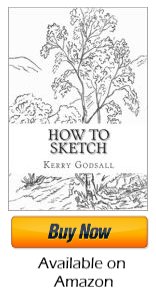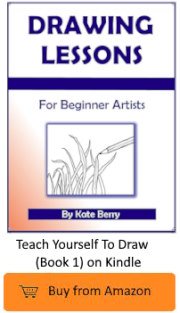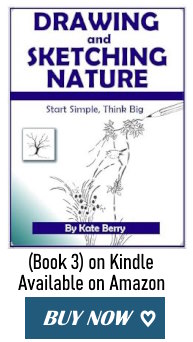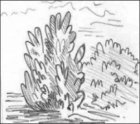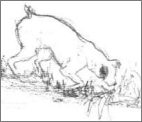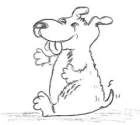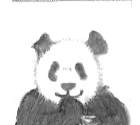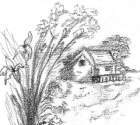Search for images or info
Rough Sketches
Producing rough sketches should be an easy task but some beginner artists encounter mental barriers that prevent them from achieving their desired results.
I should know because I am one of those strugglers! To counteract the recurring problem of blockages that I invent for myself, I now make up experiments for fun.
Fortunately, I had great success with this idea...
Practice with the intention to throw all resulting artwork in the bin!
This mindset actually releases the fears that hound us.
I know it contradicts general advice that we should always keep our artwork to monitor progress but it's only for one tiny experiment. It's very liberating to know your work won't be seen or judged so it's totally worth it.
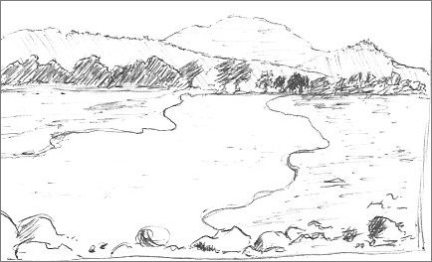
I love seeing the etchings or first impressions that artists produce prior to painting a subject. These illustrations are accomplished within minutes and a scene emerges with very few lines needed. I think it's magical!
To teach myself how to achieve these spontaneous images, I first thought to research gesture drawings. While that technique introduced the speed aspect, it wasn't really getting me closer to my goal of sketching scenery quickly. Only one thing was certain, if I was going to master this, I had to start doing rather than reading/studying.
Rough sketch #1 above is my copied version of a painter's sketch that was in an old artist magazine. I find copying existing artwork is a tremendous help to my progress, it gives an insight (how to apply strokes) that I wouldn't normally get on my own.
All images on this page were rescued from the bin only to be used as examples but they first did a good job of showing me what I'm capable of creating whenever I become doubtful.
Categories
Sketches
Instruction
Freebies
Other Areas
** Disclaimer: I receive a small commission if you buy via my links -- at no extra cost to you. **
The How To Sketch Guide
Here's a book that finally dispels the mystery of sketching!
... it only takes a little instruction
or guidance... Read more >>
Your Comments
Thank you so much for creating this website. Every time I receive
your newsletter, I get very excited.
I think 'All About Drawings' is a great website and your last newsletter moved me and gave me a lot of strength to pursue my dream of becoming a full-time artist.
Once again, thank you so much for your effort and dedication.
Ana
Popular Pages
Questions? Go here first ...
What's needed to get started ...
My Favorite ...
Practicing in this fashion consists of scribbling everything that catches your attention. I saw a photo of a turnip in a gardening book so, knowing in advance that I'm going to throw it away, it was promptly converted into simple lines (below).
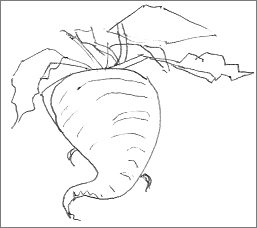
Step by Step Process
There are no rules or guidelines on how to produce rough sketches but, in saying that, I do make some suggestions so you can glide into the exercise without procrastinating...
- First get some cheap paper - my favorite is photocopy paper. In Australia, a ream (500 sheets) of copy paper sells for around $3 so that reasonable price for quantity is perfect for this experiment.
- Only use separate pieces of paper -- nothing in book form.
- Have only pencil and paper with you and no other materials (especially an eraser) within reach. I find using a pen is best but it's up to you.
- You get best results with no time to think so try completing each one in a short time like 5 minutes or less.
- Keep it simple, try following only the main lines and you will end up with an image regardless.
All expectations should disappear now you know that everything gets destroyed. Scrap paper is also great because it subconsciously endorses the fact that it's destined for the trash.
By all means, keep any you like but make sure you go into this experiment with the mindset that no evidence remains.
I often use a timer because a short timeframe allows no opportunity for perfect strokes and the biggest benefit is that there's no time to have intrusive (judgemental) thoughts.
Other Suggestions
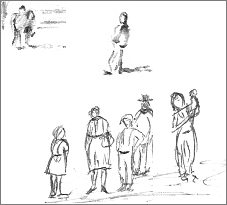
It doesn't hurt to try different mediums like pencil, charcoal or pen - just follow your instinct.
Master Artists were bold enough to disregard the basic rules of art to allow them to discover new styles, so that is what you and I need to do!
One outcome of this exercise is the thrill of discovery and this won't happen if you have preconceived notions.
On the left (rough sketch #3), I dedicated a whole disposable page to practicing sketching people in all different sizes.
This "disposal tactic" is a great opportunity to practice drawing subjects you usually avoid. You still learn from failures and it really does feel wonderful to rip them up afterwards.
It's optional if you want to scribble in some extra lines where you see shadow - that's good because it heightens your awareness for future, detailed drawings.
If you're like me and a bit uncomfortable being restricted by a border, leave it out.
Confidence Vs Ability
Now, if you think about it, confidence comes before ability. If you are confident enough to have a go, ability will surely follow. If you have ability but no confidence, then nothing happens anyway.

These birds were copied from another artist's musings for learning purposes.
This type of practice gives you confidence to add them into later sketches, when you feel something extra is needed.
All trainee artists are continuously advised to copy other artists so I like copying gesture drawings or impressions that show me how to arrive at a similar outcome. There's no point worrying about copyright if you throw these away but if you keep them, make sure you note relevant details on the back.
Once you see your copied work, you become inspired by results and encouraged to keep going. Actually, it's quite good fun to go through all the bits of paper containing a rather odd assortment of images. Some are horror stories on their own (to be disposed of as quickly as possible), but others make you pause for contemplation.
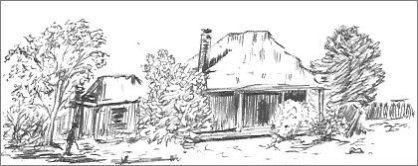
Rough Sketch #5 (above) - On one particular scrap of paper, this cabin sketch caught my attention. I used a black writing pen and completed it in a very short amount of time -- I think that's because the original artist went to the trouble to condense an intricate scene into something simple. It was immediately declared a favorite and one I couldn't throw away.
I'm very grateful to these thoughtful artists who share their work with us.
Remember, preceding artists initially felt the same way you do but it was consistent practice that helped them reach their goals - absolutely everyone starts at the beginning.
All learning requires us to push through mental and physical barriers but success surely does follow.
I read this excerpt in a book recently and I think it's very appropriate for all trainee artists to remember...
"If it's possible, then it can be done. If it has been done, then it is possible."
Only concentrate on what you want to achieve and ignore any negative self-talk. Anything is possible, you just have to set that little fact right in your head. Good luck, I wish you great success!
See the links below for a variety of sketches:
Related subjects for you to enjoy...
* Allaboutdrawings.com is a participant in the Amazon Services LLC Associates Program, an affiliate advertising program designed to provide a means for sites to earn advertising fees by advertising and linking to Amazon.com.
Copyright © 2005 - 2025 www.allaboutdrawings.com. All rights reserved.






